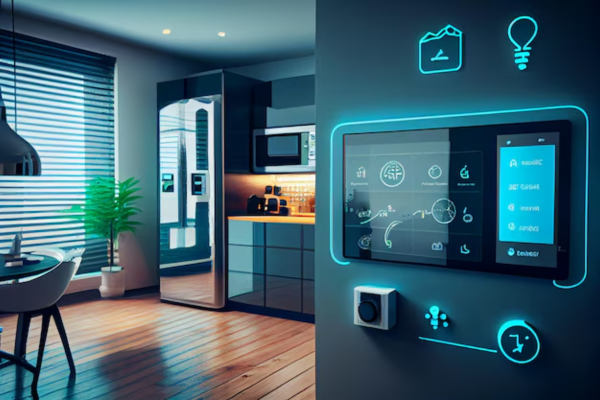What Should You Look for in an Internet Package for Smart Homes: Top 5 Features
by Pijus Maity Technology Published on: 28 February 2025 Last Updated on: 03 March 2025

With increasing numbers of homes going smart, choosing the proper internet package is important to be properly connected.
People should not forget how many devices will be connected to the network and what they will use them for, from movie streaming to smart device control. Choosing the proper internet package balances speed, dependability, and cost.
Others provide home installations with internet packages by Digicel, which offer plans with fast speeds suitable for video streaming and smart device management.
Awareness of the available features can enable consumers to decide what is best for their requirements for a smooth, smart home and for staying online.
1. High Bandwidth for Multiple Devices

Several devices access the internet simultaneously in a smart home. These include smartphones, tablets, computers, and other smart home gadgets. All of these devices consume some part of your home internet bandwidth.
Bandwidth is the quantity of data your internet service can handle. Several devices have to share bandwidth when more than one is being used. When one device is watching a movie, and another is making a video call, both use lots of data.
Selecting a web plan that offers additional bandwidth enables all the devices on. This never lags or buffers when used. An appropriate plan with adequate speed matters for seamless usage in households with many devices.
2. Future-Proof with Fiber Optics
Fiber optic broadband is one of the more premium options for future-proofing a home that is being made smart.
These cables transport data in light, providing much faster and greater bandwidth than the ubiquitous copper cable. This capability is of utmost use as more smart home devices integrate within the property and require additional data.
Fiber optic internet installation can minimize the necessity for frequent upgrades. Fiber connections are made to last for decades with little maintenance, making them an excellent choice for communities that would prefer fewer disruptions in their internet connection.
The benefits include faster speeds and greater connections necessary for video streaming, online gaming, and other high-bandwidth applications. Fiber optics is the future option for homeowners who wish to invest money in a smart home.
3. Strong Upload and Download Speeds
It requires monitoring the download and upload speeds at high levels while selecting an internet package for a smart home.
The speeds will determine the speed at which data is transferred from the devices to the web. The lowest download speed supporting most standard activities, such as web or email access, must be at least 10 Mbps per user.
Upload speed is also important, especially for video chat or online gaming tasks. Most families will discover that an upload speed of about 3 Mbps is adequate for these functions. The higher recommended speed varies based on the number of household internet applications.
Fiber-optic internet has much faster capabilities. A gigabit fiber service will typically bring 1,000 Mbps upload and download.
However, speeds are not always uniform, depending on the number of devices used simultaneously on the network. Home needs must be considered when deciding on an internet plan.
4. Reliable Router Compatibility
Router compatibility is particularly important when selecting an internet package for a smart home. A compatible router can handle numerous smart devices, both old and new, to ensure easy integration. This includes compatibility with existing Wi-Fi standards, e.g., Wi-Fi 6.
The second key feature is that the router can support many devices simultaneously. For big households with several smart devices, a MU-MIMO technology router ensures speedy and stable connections. This allows many devices to use the internet simultaneously without interference.
Also, routers should have good security features to ensure privacy. Select ones that support WPA3 encryption. Firewalls and guest network options also make internet use more secure.
5. Sufficient Speeds for Video Streaming
Video streaming depends significantly on internet speed. For streaming for ordinary definition (SD) use, 3-4 Mbps speed will suffice. For a good experience with high-definition (HD) content, a faster internet connection of 5-8 Mbps is suitable.
4K Ultra HD streaming demands high bandwidth. Industry experts recommend a minimum speed of 25 Mbps for optimum constant 4K viewing. This avoids buffering and offers smooth video quality.
It is more prudent to track the number of devices used simultaneously. When multiple devices are used for streaming, one requires additional internet speed. This prevents one from providing poor image quality to all the devices.
6. Wifi Coverage and Mesh Networks

Wi-Fi coverage is relevant, especially in large houses or those with multiple levels. All the smart devices communicate over Wi-Fi, and an area with less coverage will cause connectivity issues in some parts of the house.
- Good quality router
Buy one that can support numerous devices and cover the farthest corner of your home. The router uses ISPs’ internet plans; however, we recommend upgrading to a quality router or a mesh network if you need better performance.
- Mesh networks
In mesh networks, many nodes connect to create one unified Wi-Fi network around your house. This works extremely conveniently if your house is big or your devices are far from your main router. The coverage is spot-on balanced since a mesh system has no dead spots.
7. Security Features
Due to the numerous devices connected to the Internet, smart homes are very much exposed to cyber-attacks. When picking an ISP for your smart home, choose a more robust security plan to protect your devices and network.
- Encryption and firewall
Insist on ISPs that secure their connections with strong encryption. Some ISPs offer additional security options, such as firewall features or malware protection, all of which protect your devices from harm.
- Network monitoring
Network monitoring, accompanied by some internet plans, will alert you whenever irregular activities occur in your home network. This will help you identify and troubleshoot possible security threats very early.
Choosing the Right Internet Package
Selecting the correct internet package for a smart home entails measuring several critical factors. First, consider the connections available: fiber, cable, or satellite. Each has varying speeds and dependability.
Second, consider the number of smart devices in the home. A higher number may demand quicker speeds or limitless data bundles.
Lastly, check if the package includes a data quota. Streaming and security camera watching use more bandwidth.
After a well-informed assessment of these factors, one can select an internet package that provides decent performance for an intelligent home installation that will satisfy today’s needs.



































































































